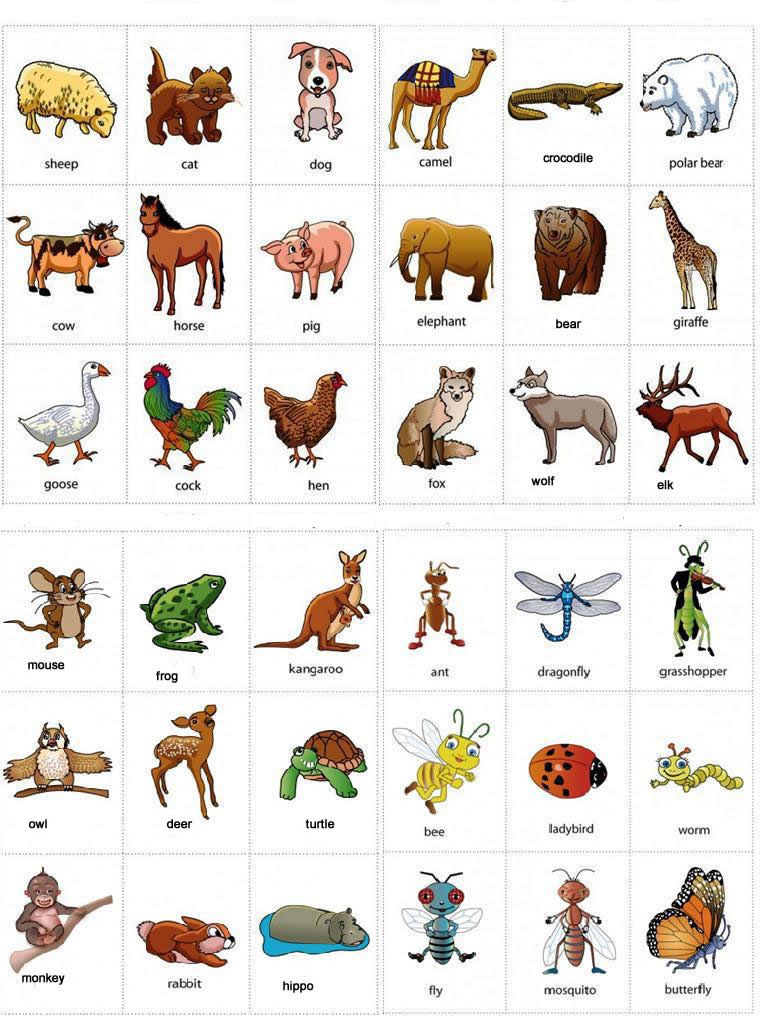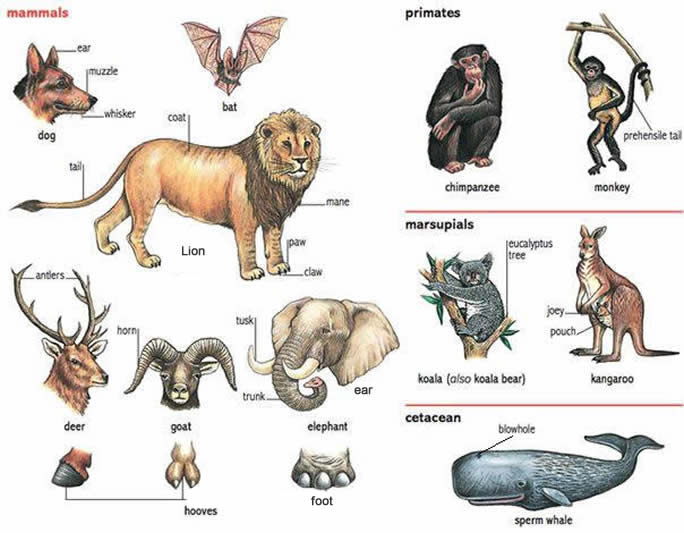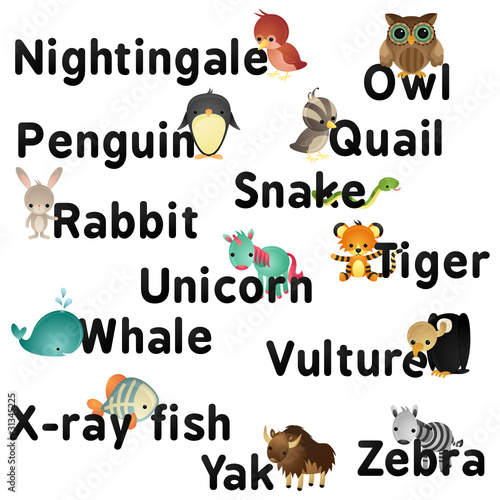Animals Pictures With Names Biography
The cheetah is the world's fastest land mammal. With acceleration that would leave most automobiles in the dust, a cheetah can go from 0 to 60 miles (96 kilometers) an hour in only three seconds. These big cats are quite nimble at high speed and can make quick and sudden turns in pursuit of prey.Before unleashing their speed, cheetahs use exceptionally keen eyesight to scan their grassland environment for signs of prey—especially antelope and hares. This big cat is a daylight hunter that benefits from stealthy movement and a distinctive spotted coat that allows it to blend easily into high, dry grasses.
When the moment is right a cheetah will sprint after its quarry and attempt to knock it down. Such chases cost the hunter a tremendous amount of energy and are usually over in less than a minute. If successful, the cheetah will often drag its kill to a shady hiding place to protect it from opportunistic animals that sometimes steal a kill before the cheetah can eat. Cheetahs need only drink once every three to four days.
Female cheetahs typically have a litter of three cubs and live with them for one and a half to two years. Young cubs spend their first year learning from their mother and practicing hunting techniques with playful games. Male cheetahs live alone or in small groups, often with their littermates.
Most wild cheetahs are found in eastern and southwestern Africa. Perhaps only 7,000 to 10,000 of these big cats remain, and those are under pressure as the wide-open grasslands they favor are disappearing at the hands of human
Eadweard James Muybridge (/ˌɛdwərd ˈmaɪbrɪdʒ/; 9 April 1830 – 8 May 1904, birth name Edward James Muggeridge) was an English photographer important for his pioneering work in photographic studies of motion, and early work in motion-picture projection. He adopted the name Eadweard Muybridge, believing it to be the original Anglo-Saxon form of his name.
He emigrated to the United States as a young man and became a bookseller. He returned to England in 1861 and took up professional photography, learning the wet-plate collodion process, and secured at least two British patents for his inventions.[1] He went back to San Francisco in 1867, and in 1868 his large photographs of Yosemite Valley made him world famous. Today, Muybridge is known for his pioneering work on animal locomotion in 1877 and 1878, which used multiple cameras to capture motion in stop-motion photographs, and his zoopraxiscope, a device for projecting motion pictures that pre-dated the flexible perforated film strip used in cinematography.[2]
In 1874 he shot and killed Major Harry Larkyns, his wife's lover, but was acquitted in a jury trial on the grounds of justifiable homicide.[3] He travelled for more than a year in Central America on a photographic expedition in 1875.
In the 1880s, Muybridge entered a very productive period at the University of Pennsylvania in Philadelphia, producing over 100,000 images of animals and humans in motion, capturing what the human eye could not distinguish as separate movements. He spent much of his later years giving public lectures and demonstrations of his photography and early motion picture sequences, traveling back to England and Europe to publicise his work. He also edited and published compilations of his work, which greatly influenced visual artists and the developing fields of scientific and industrial photography. He returned to his native England permanently in 1894, and in 1904, the Kingston Museum, containing a collection of his equipment, was opened in his hometown.
Contents [hide]
1 Names
2 Early life and career
3 Serious accident and recuperation
4 Photographing the American West
5 Stanford and horse gaits
6 Murder, acquittal and paternity
7 Later motion studies
8 Retirement and death
9 Influence on others
10 Exhibitions and collections
11 Legacy and representation in other media
12 See also
13 References
14 Sources
15 Further reading
16 External links
Names[edit]
Edward James Muggeridge was born and raised in England. Muggeridge changed his name several times, starting with "Muggridge". In the 1850s in the United States, he used the surname "Muygridge".[4]
After he returned from Britain to the United States in 1867 he used the surname "Muybridge". In addition, he used the pseudonym Helios (Greek god of the sun) to sign many of his photographs. He also used this as the name of his studio and made it the middle name for his only son, Florado Muybridge, born in 1874.[5]
While travelling on a photography expedition in the Spanish-speaking nations of Central America in 1875, the photographer advertised his works under the name "Eduardo Santiago Muybridge" in Guatemala.[6] After an 1882 trip to England, he changed the spelling of his first name to "Eadweard," the Old English form of his name. The spelling was probably derived from the spelling of King Edward's Christian (first) name as shown on the plinth of the Kingston coronation stone, which had been re-erected in the town in 1850. He used "Eadweard Muybridge" for the rest of his career,[4][7] but his gravestone carries his name as "Eadweard Maybridge".[8]
Early life and career[edit]
Muybridge was born in Kingston upon Thames, England, on 9 April 1830 to John and Susan Muggeridge; he had three brothers. His father was a grain and coal merchant, with business spaces on the ground floor of their house, and family living spaces above. After his father died in 1843, his mother carried on the business. His cousin Norman Selfe who also grew up in Kingston upon Thames moved to Australia and, following a family tradition, became a renowned engineer.[9]
Muybridge emigrated to the United States at the age of 25, arriving in San Francisco in 1855, a few years after California became a state, and while the city was still the "capital of the Gold Rush."[10] He started a career as a publisher's agent for the London Printing and Publishing Company, and as a bookseller. At the time, the city was booming, with 40 bookstores, nearly 60 hotels and a dozen photography studios.[11] Later in his life he wrote about also having spent time in New Orleans and New York City during his early years in the United States.[12]
Serious accident and recuperation[edit]
By 1860, Muybridge was a successful bookseller. He left his bookshop in care of his brother, and prepared to sail to England to buy more antiquarian books. However, Muybridge missed the boat and instead left San Francisco in July 1860 to travel by stagecoach over the southern route to Saint Louis, by rail to New York City, then by ship to England.[13][1]
In central Texas, Muybridge suffered severe head injuries in a violent runaway stagecoach crash which injured every passenger on board, and killed one of them.[14][15] Muybridge was bodily ejected from the vehicle, and hit his head on a rock (or other hard object). He was taken 150 miles to Fort Smith, Arkansas for treatment (his earliest memories post-accident were there), where he stayed three months, trying to recover from symptoms of double vision, confused thinking, impaired sense of taste and smell, and other problems. He next went to New York City, where he continued in treatment for nearly a year before being able to sail to England.
Arthur P. Shimamura, a psychologist at the University of California, Berkeley, has speculated that Muybridge suffered orbitofrontal cortex injuries, which may have led to some of the emotional, eccentric behavior reported by friends in later years, as well as freeing his creativity from conventional social inhibitions. Today, there still is little effective treatment for this kind of injury.[1][16]
While recuperating in England and receiving treatment from Sir William Gull, Muybridge took up the new field of professional photography sometime between 1861 and 1866.[16] Muybridge later stated that he had changed his vocation at the suggestion of his physician.[1] He learned the wet-plate collodion process in England, and may have been influenced by some of the great English photographers of those years, such as Julia Margaret Cameron.[17][18][19] Also during this period, Muybridge secured at least two British patents for his inventions










No comments:
Post a Comment